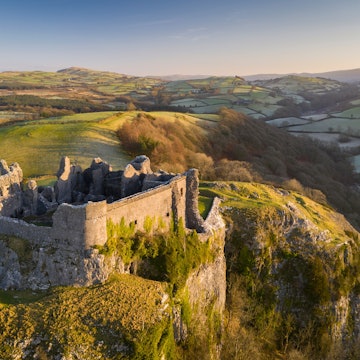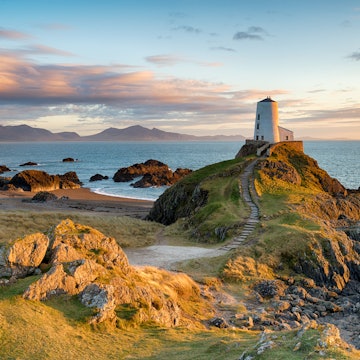
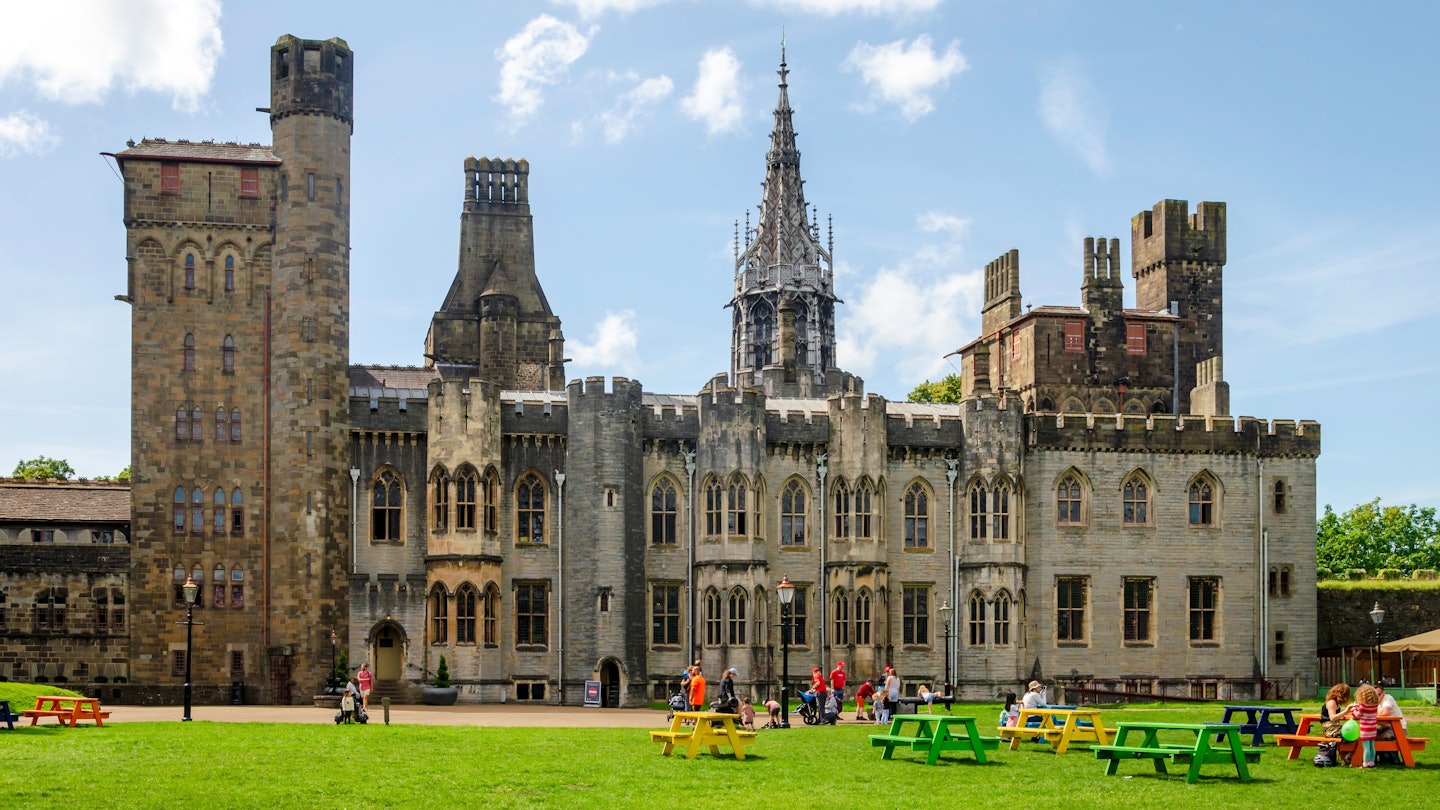
Cardiff Castle is a fascinating collection of features from across the centuries. Ivan Maguire/Shutterstock
Defiant, impressive and hulking, Cardiff Castle has presided over the capital of Wales for two millennia. Indeed, this dramatic fortification gave the city its original name – Caer-Taff, meaning “Fort on the River Taff,” which over the centuries became Cardiff.
When the city was named as the capital in 1955, Wales gained a central administrative hub for the first time since Llewelyn the Great held court in Strata Florida Abbey in Ceredigion in the 13th century, with the castle as its figurehead monument.
Surviving many turbulent periods in Welsh history, Cardiff Castle is an amalgamation of all the eras it lived through – a strategic Roman fort, a defensive Norman stronghold, an opulent Victorian Gothic home, a make-shift air-raid shelter and now a symbol of Welsh national pride. At this remarkable fortress, you’ll see the full scope of Welsh history and culture.
Whatever draws you to Cardiff, seeing the castle should be top of your list of things to do. Here’s everything you need to know about visiting Cardiff Castle.

What’s the history of Cardiff Castle?
The first fortifications beside the River Taff were raised by the Romans around 50 CE. Four successive forts were built to accommodate the legions sent by Julius Caesar to conquer and suppress the native peoples of western Britain.
The first recognizable castle – a wooden structure set atop an earth mound overlooking the river – was raised by the Normans in the 11th century, and upgraded to a 12-sided stone keep by Robert FitzRoy, Lord of Glamorgan, in 1122. Robert Curthose, the eldest son of William the Conqueror, was imprisoned here for 30 years after falling out with his siblings, William II and Henry I.
During the Middle Ages, the castle was repeatedly attacked, including by the Welsh rebels Llewelyn Bren and Owain Glyndŵr. Later, it was seized and counter-seized by both sides during the English Civil War, before passing to the Marquesses of Bute in the 18th century.
Much of the castle’s modern appearance is the result of an extravagant remodeling by the 3rd Marquess in 1865 – a 16-year-long project that filled the interiors with gilt, murals and carvings. In 1947, the Bute family formally gifted the castle to the city of Cardiff.
When should I visit Cardiff Castle?
The castle is open daily from 10am to 6pm on weekdays and 9am to 6pm on weekends, closing an hour earlier (at 5pm) from November to February. Weekends tend to be the busiest time to visit, along with school holidays, but weekday lunchtimes can be busy with school groups. To enjoy the castle at its quietest, come early in the morning or later in the afternoon on a weekday.
How much do tickets cost?
Standard entry costs £16 (US$21.60) for adults and £10.50 (US$14.20) for children, with discounts for students, seniors and visitors with disabilities. Joining a guided tour costs an additional £4.50 (US$6.10) for adults and £3.50 (US$4.70) for children.
What should I eat and drink on a trip to Cardiff Castle?
The Castle Cafe in the grounds serves drinks, treats and light meals; there are more places to eat just outside the castle. It’s a short walk to Cardiff Indoor Market, where you can graze on street food from around the world from Monday to Saturday. Head to Ffwrnes for wood-fired pizza, the Bearded Taco for Mexican fusion food, Bao Selecta for stuffed steamed buns or Dirty Gnocchi for deep-fried loaded gnocchi. Finish up at Bakestones with a Welsh cake, hot off the griddle.

What are the must-sees at Cardiff Castle?
There’s plenty to see at this historic fortress, so take your time exploring and soaking in the centuries.
Climb up the original Norman keep
As you walk through the south gate to Cardiff Castle, the sheer size and grandeur of the fortifications and grounds will become apparent. Inside the outer walls, manicured lawns stretch out to the Norman shell keep in the far corner – a 12-sided defensive building from the early 12th century, perched atop an imposing motte (earth mound). It once protected a collection of wooden buildings inside its sturdy stone walls.
This is the place to head once you’ve got your ticket from the visitor center. Climb 50 stone steps up the side of the motte, then continue climbing to reach the viewing platform inside the keep. From here, you’ll get panoramic views over the castle grounds and the city center, and also the conical towers of Castell Coch – another extravagant residence of the 3rd Marquess of Bute – far in the distance to the north.
Admire the castle’s incredible interiors
The most evocative part of Cardiff Castle is the complex of residential apartments in the southwest corner, built during the 1500s for the resident earls, who wanted to move away from focusing purely on defense and make the castle more of a home. What they created was luxurious for the times – but it wasn’t until the 3rd Marquess of Bute teamed up with the architect and designer William Burges in 1865 that the interiors became truly spectacular.
Drawing inspiration from a string of different art movements, architectural styles and cultures, their collaboration resulted in the unashamedly elaborate, maximalist decor that you can see today. How restful it would have been living in these over-the-top surroundings is open to question, but the gold-gilded ceilings, intricate wood carvings, ornate hand-painted murals and loud color schemes are a feast for the senses.

Join a castle tour
It’s worth joining one of the castle’s excellent guided tours to gain access to rooms that are closed off to holders of general-admission tickets. The chambers in the clock tower (including the summer and winter smoking rooms) are a riot of gold leaf, carved timber, murals and narrative panels. Lord Bute’s bedroom is particularly opulent – some 60 types of marble line the toilet screen, bronze statues adorn the fireplace and 200 glass mirrors in the ceiling ensure the room dazzles everyone who enters.
Peek at the Roman fortress inside Cardiff Castle
A section of the original Roman walls is visible in the visitor center. It comes from the first of four Roman forts built on the site some 1900 years ago, not long after Roman forces first made their incursion into the British Isles on the orders of Julius Caesar. A large carved plaster and cement mural on the wall nearby artistically recreates scenes from the Roman invasion.
See more military history at the Firing Line
Also accessed from the visitor center is the Firing Line, a small museum devoted to the history of the Queen’s Dragoon Guards and the Royal Welsh Regiment. Through historical information, interactive exhibits and artifacts, it tells the three-century-long story of Wales’ army, including sections on the role of Welsh soldiers in the 1815 Battle of Waterloo and more recent service in Iraq and Afghanistan.
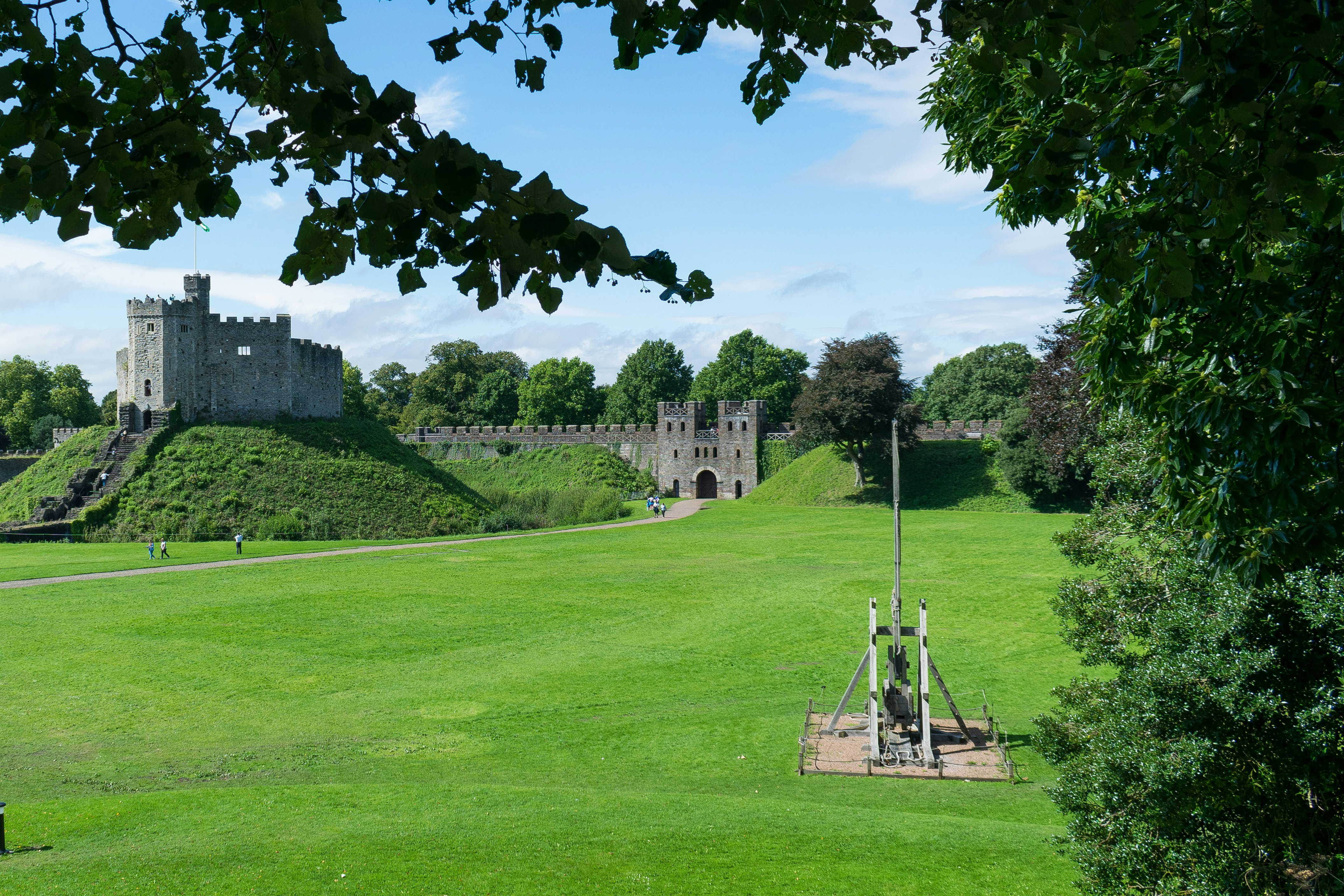
Get a sense of castle warfare
Military-history buffs (and kids of all ages) will enjoy wandering over to the green to admire the huge replica trebuchet – a medieval siege engine with a hinged arm and weight for launching projectiles at enemy castles – constructed as a prop for the movie Ironclad (2011). Whether trebuchets were used against Cardiff Castle is unclear, but the fortress was repeatedly besieged, most notably in the 14th, 15th and 17th centuries.
Walking along the battlements in the footsteps of Roman legionaries and medieval men-at-arms is another way to bring the castle’s military history to life. Note, however, that many of the embrasures and arrow slits in the newer parts of the castle were a cosmetic addition, rather than a military necessity. The Norman shell keep is the place to see original defensive structures.
During WWII, the tunnels inside the castle walls were used as emergency shelters for up to 1800 people. Some sections have been restored to their wartime appearance, with an atmospheric audio track recreating the sound of life in the shelters, complete with air-raid sirens and the sound of incoming bomber planes and falling bombs.
Take in a live show or a historical re-enactment
There’s a busy schedule of events at the castle, from performances by the likes of the Pet Shop Boys and Fontaines DC to historical re-enactments – complete with flamboyantly dressed nobles and noblewomen and knights in armor (even Roman legionaries sometimes get a look in). Attending an event here will give you a whole different experience of this historic space; check the Cardiff Castle website for what’s coming up.
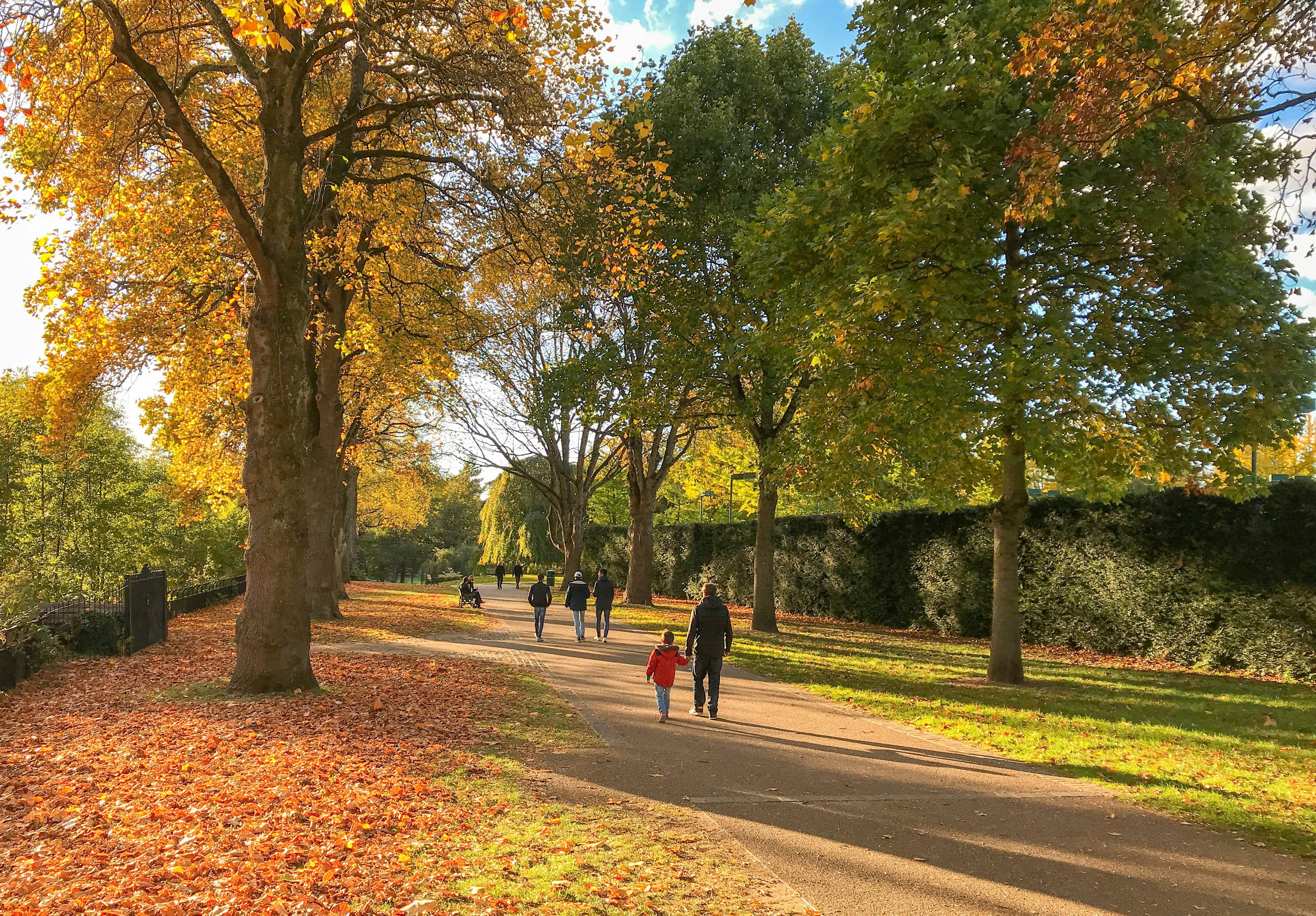
Relax in the green spaces of Bute Park
Sprawling close to the castle walls along the River Taff, Bute Park has a layout, plantings and walking routes that can be traced back to the green-fingered Pettigrew family. Several generations of this enthusiastic clan of horticulturalists were responsible for establishing the colorful, carefully pruned herbaceous borders, neatly trimmed lawns and tree-shaded pathways from the 1800s onward.
The park is a great spot to relax and recharge after exploring the castle, and you can walk over the bouncy red Millennium Bridge (with good views along the river), past the Sophia Gardens Cricket Ground, along the elm-lined avenue of Pontcanna Fields, and up to Blackweir Bridge.
Take a detour to the Principality Stadium
Almost next to the castle is Cardiff’s modern-day arena for combat and conquest. The Principality Stadium was built in 1999 to host the Rugby World Cup, and it has become a cultural icon as the home ground for the Welsh national rugby union team. The stadium has also hosted some of the biggest names in music, from Tina Turner to Taylor Swift and the Rolling Stones.
To go behind the scenes and walk in the footsteps of Welsh rugby legends, book an official tour, during which guides will take you to areas you wouldn’t otherwise be able to see, including the home and away team dressing rooms and the entrance tunnel that players walk through before emerging onto the pitch.
If the vertiginous views from the upper terraces aren’t enough, consider the thrilling experience known as SCALE. Daredevils can climb 15 floors to the stadium roof, then creep carefully along the edge of the roof panels, for great views over the city, the river and the stadium below. At the end of the tour, you have the option to ride a zip-line from the rooftop mast, then abseil down to the riverside.
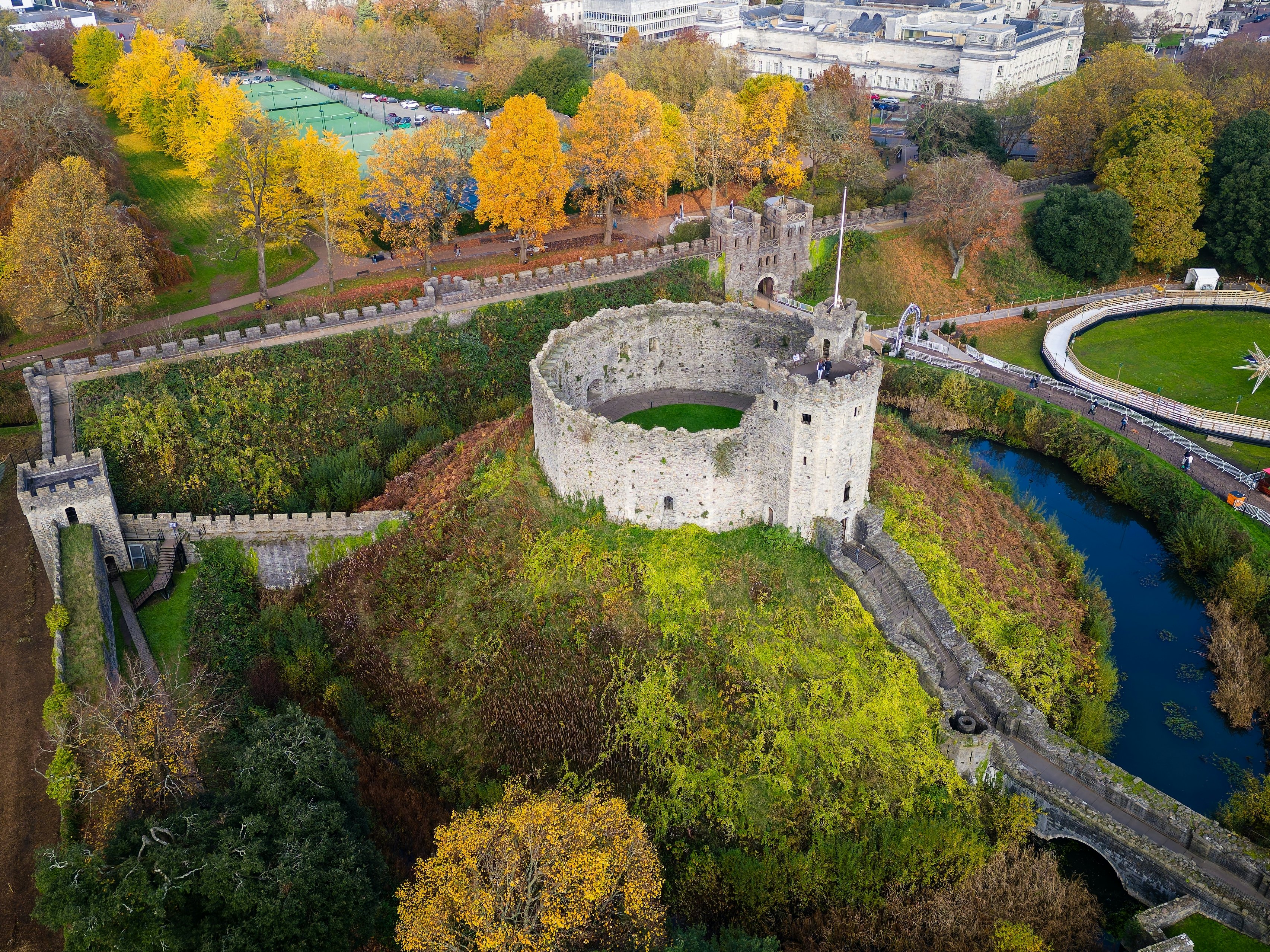
Is Cardiff Castle accessible?
The city administration is on a mission to create more accessible public spaces, and this includes Cardiff Castle. While the Norman Keep and Castle Apartments are not wheelchair accessible, the paths around the Castle Square and some interior areas are well set up for visitors with mobility issues. Concessionary tickets for people with disabilities include free admission for a carer.
Top tips for visiting Cardiff Castle
You’ll have a more rewarding trip if you follow these top tips.
The castle gets busy on weekends, during school holidays and when there’s an event at the nearby Principality Stadium. Visit mid-week in term time, for a quieter experience.
Before exploring the castle, download the free Cardiff Castle app (for iOS and Android) to access a self-guided audio walking tour – an alternative to the official, paid-for guided tours.
Before you come, check the Cardiff Castle website for listings of upcoming concerts, performances and historical re-enactments.
After visiting, head next door to Bute Park to recharge your batteries in this expansive and green public space.
This article was adapted from Lonely Planet’s Wales guidebook, published in June 2025.











